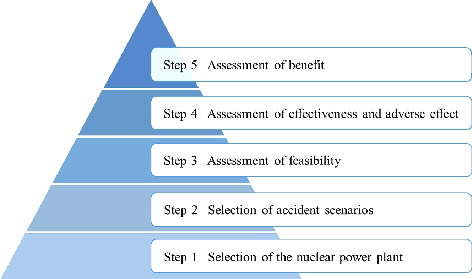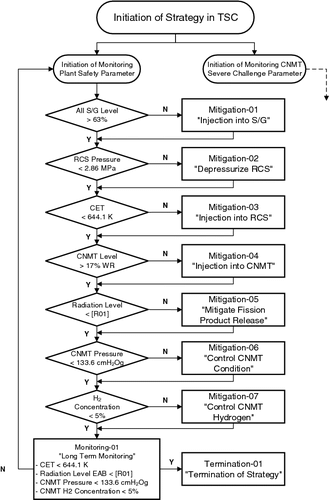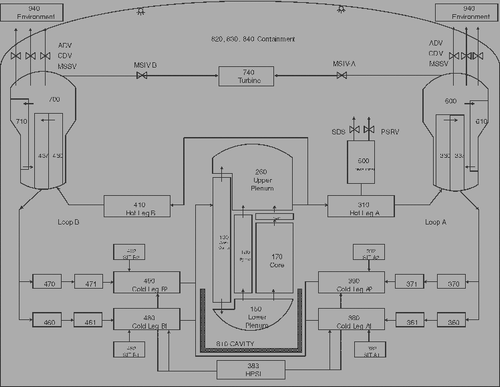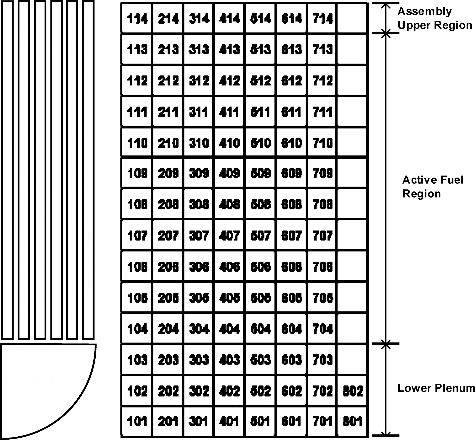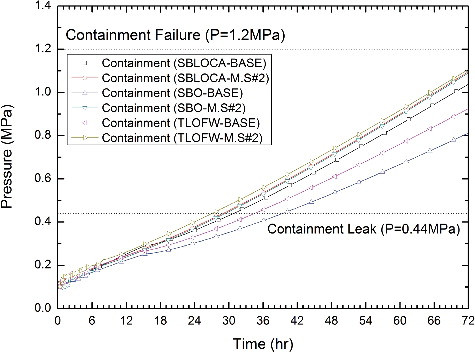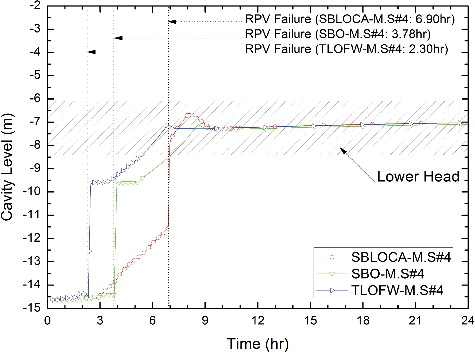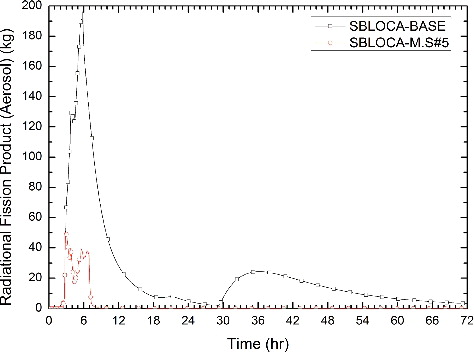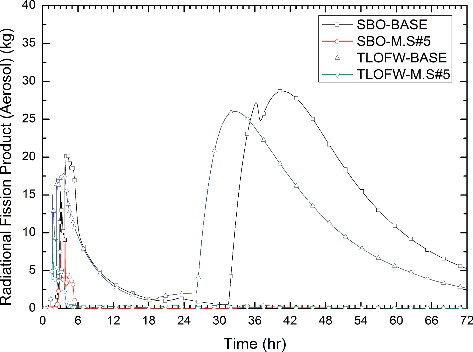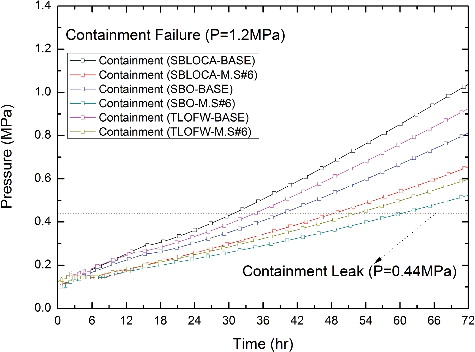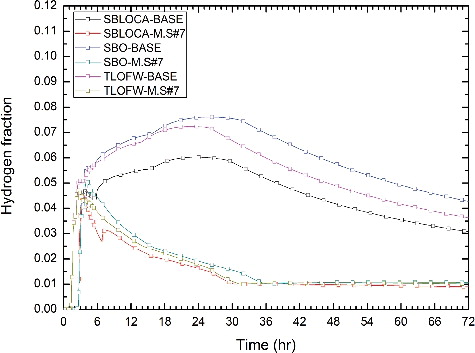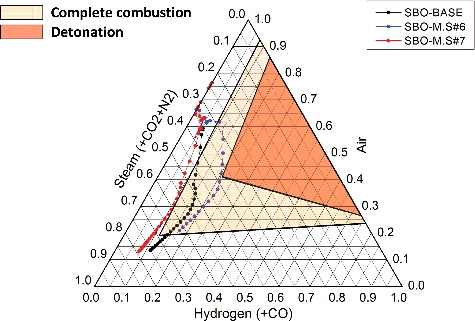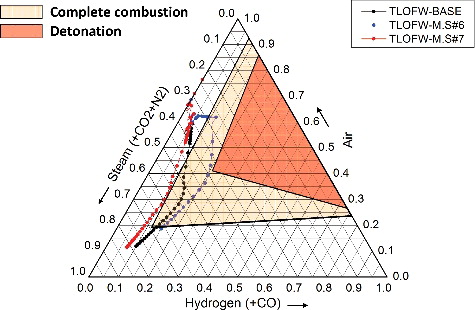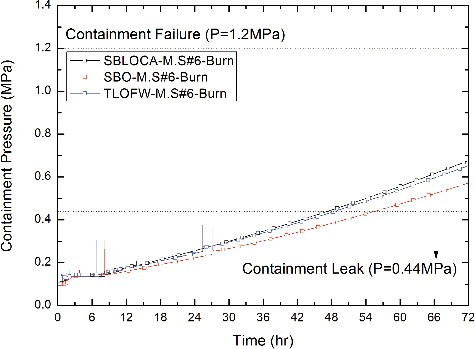Figures & data
Table 1. Probability of transition from initiating events to severe accidents for OPR1000.
Table 2. Severe accident mitigation strategies of SAMG.
Table 3. Selection of mitigation measures.
Table 4. OPR1000 operating conditions: design values per FSAR and steady-state MELCOR modeling results.
Table 5. Major accident sequences in the base cases.
Table 6. Major accident sequences for SBLOCA without SI in base and mitigation cases.
Table 7. Major accident sequences for SBO in base and mitigation cases.
Table 8. Major accident sequences for TLOFW in base and mitigation cases.

